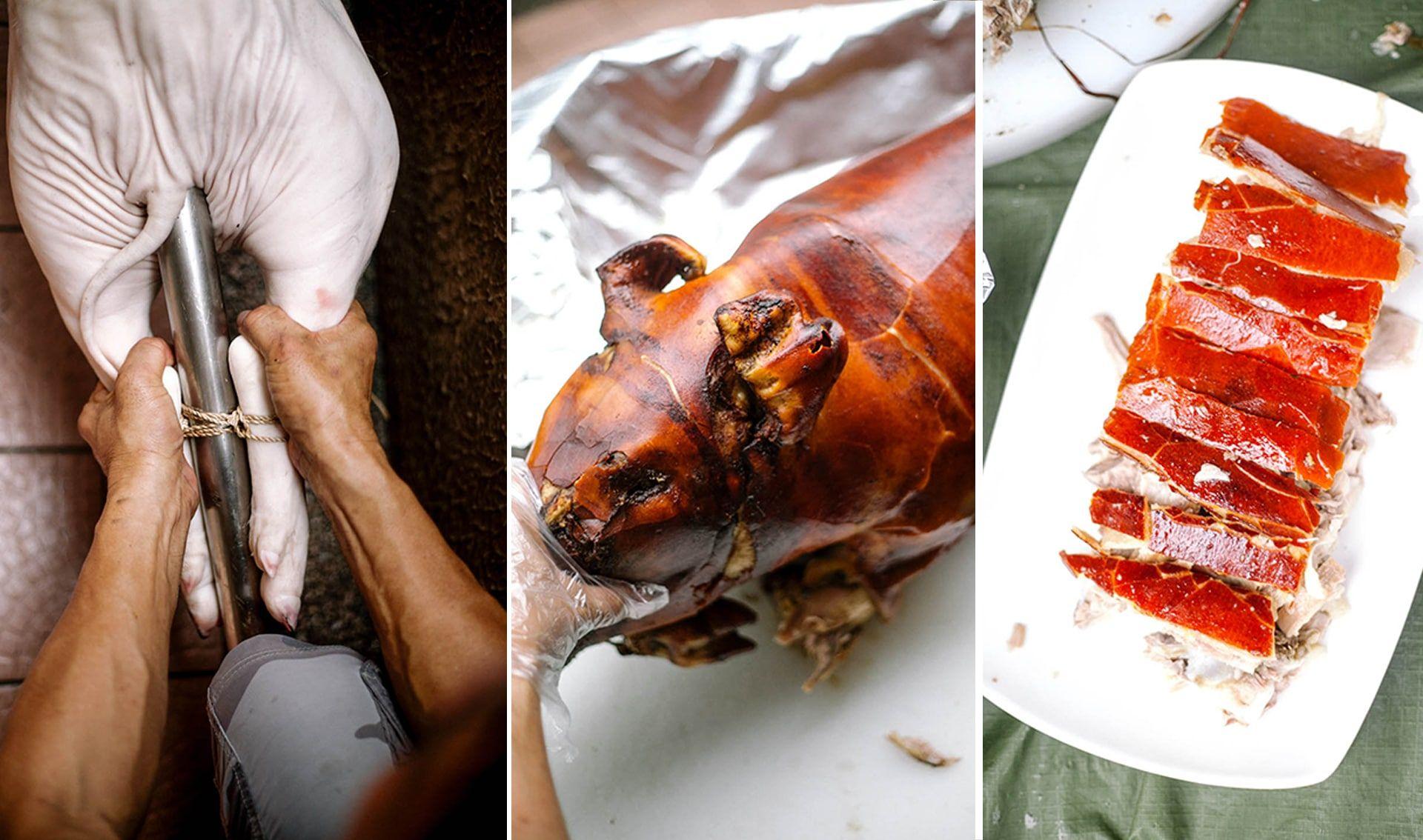No family gathering or party is complete without a plate of chopped lechon or a roast pig delivered right before the meal starts. Some of us love drowning the rice in sarsa before eating spoonfuls of the juicy meat, while others join the Hunger Games-like race to get the crispiest skin on the plate.
In the Philippines, Cebu lechon has gained worldwide recognition, but other provinces have their own unique touches to roasting a pig. Some of the identical preparation methods lechoneros share include coating the pig’s skin in soy sauce, coconut water, or even milk to give the pig color. But it’s the type of stuffing, specific cooking time, and the kind of pigs used that distinguishes one lechon from another.
To find out how a pig is prepared before it’s roasted to become lechon, we had Charlie Gaw of Sabroso Lechon show us his business’ own process. Sabroso takes its preparation methods from Bacolod, as the province’s own way results in a more fragrant flavor and prevents that “nakakaumay” effect one usually gets from eating pork.
Step 1
Stick a stainless steel rod or bamboo pole through the pig’s body.
The belly part should be cut open before placing the rod inside. Tie the hands and feet of the pig to prevent them from coming apart during roasting.
Step 2:
Prepare the ingredients for the lechon stuffing. Bacolod lechon stuffing uses salt, batuan fruit, and lemongrass.
Step 3
Spread the salt by reaching the hand into the stomach cavity. After the salt, place pieces of the batuan fruit inside the pig.
Step 4
Fold the lemongrass before stuffing them inside the pig.
Two large bundles of lemongrass (tanglad in Filipino) were placed inside this pig.
Step 5
Sew up the stomach cavity or belly opening using an oversized needle wire and kitchen twine.
Pour coconut water, milk, or soy sauce on the pig. Roast the pig according to the time it will be served. After the pig is roasted, remove the rod before preparing the lechon for serving.
Step 6
Chop at the neck to remove the head.
Step 7
Remove all of the lemongrass and start cutting at the backbone until the end of the pig. Don’t forget to remove the stitch sealing the belly.
Step 8
Cut the pig according to the desired parts. Ribs are best served with the meat still on the bone.
This article was originally published in 2014.
